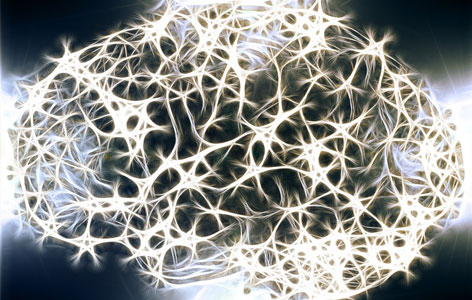
By: Tyler Saumur, ORT Times Writer and UHN Trainee
Imagine trying to eat your cereal in the morning and every time you raise your spoon towards your mouth, you are left with a dismal amount of cereal and milk remaining, as the majority has fallen back to your bowl from the incessant trembling of your hand. Often presenting in those with Parkinson’s disease, these tremors are a result of changes in the activity of various structures in the basal ganglia – a region of the midbrain that controls movement. Currently, high frequency deep brain stimulation (DBS) of the basal ganglia is a widely-accepted treatment for tremor and other motor impairments common in those with Parkinson’s, such as disturbances in gait. While the intervention is effective, there are still questions to be answered regarding how stimulating certain structures of the basal ganglia at different frequencies changes their physiology.
Work out of Toronto Western Hospital by Luka Milosevic, a PhD candidate at the Institute of Biomaterials and Biomedical Engineering, and colleagues sought to answer exactly that1. While patients underwent awake neurosurgery for the implantation of DBS electrodes, the researchers recorded and stimulated single neurons in specific target structures of the basal ganglia at varying frequencies. They found multiple inhibitory mechanisms triggered by DBS; specifically, increasing the stimulation frequency suppressed neuronal activity, an effect that also persisted briefly after the stimulation ended. They found that this “short-term silencing” of activity during high frequency stimulation was caused by depletion of neurotransmitters which decreases the strength between synaptic connections. Interestingly, they found that after DBS ended, another, “long-term,” plastic change occurred which actually increased synaptic strength. This novel finding and the insights into frequency-specific property changes elicited by DBS can be further explored to optimize treatment and gain insight into the underlying mechanisms responsible for motor behaviour improvement.
By further understanding the neuronal properties manipulated by DBS, the stimulation may be adapted over time to improve the lives of more individuals for whom current techniques have been unsuccessful. DBS offers a promising means to alleviate motor symptoms in Parkinson’s disease and will only improve with future research.
References:
1. Milosevic, L., Kalia, S. K., Hodaie, M., Lozano, A. M., Fasano, A., Popovic, M. R., & Hutchison, W. D. (2017). Neuronal inhibition and synaptic plasticity of basal ganglia neurons in Parkinson's disease. Brain, 141(1), 177-190. Link: https://academic.oup.com/brain/advance-article-abstract/doi/10.1093/brai...




